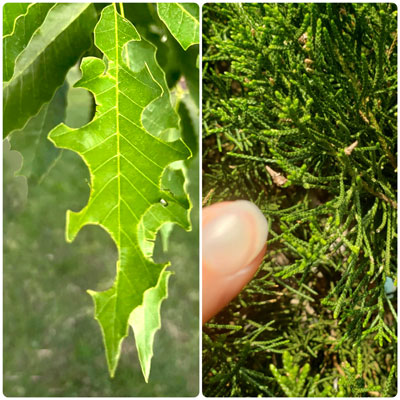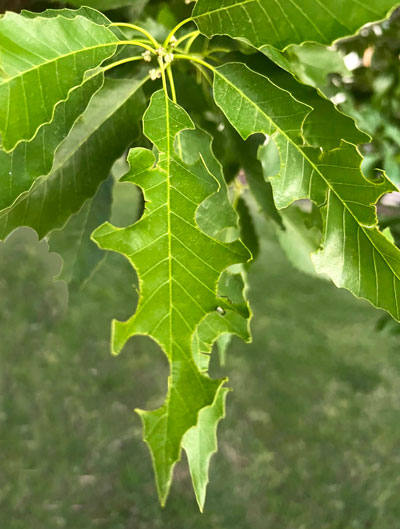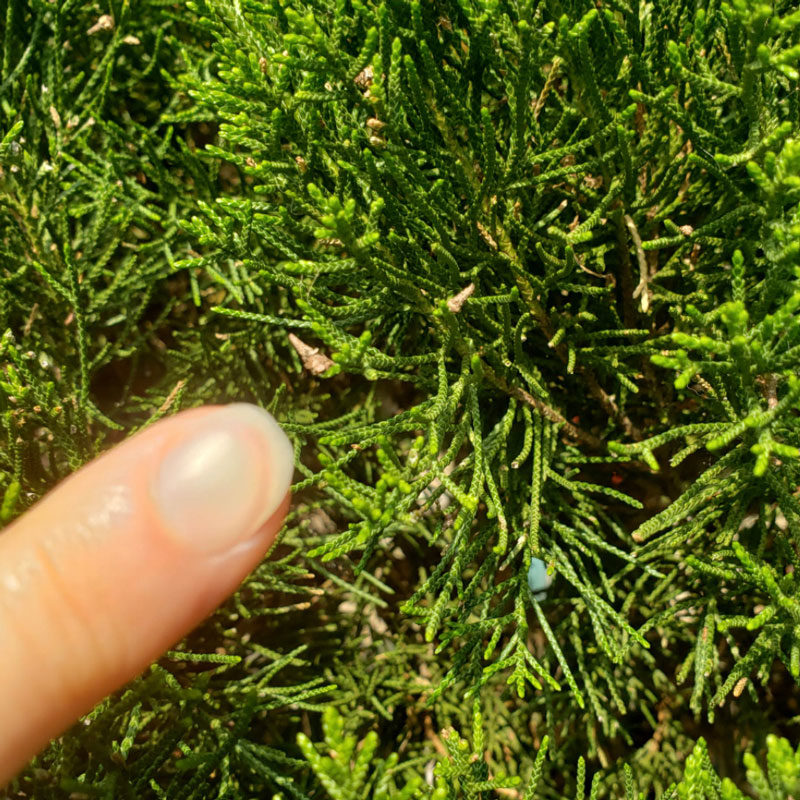Chomp, chomp, chomp

Leaf cutter bee
This industrious insect – that you may never see – uses her mouthparts to cut perfect part-circles out of the edges of leaves. She then takes these leaf parts and uses them to build her nest in a tight little space such as a dry faucet or downspout or perhaps a catch in a tree trunk.

This photo was posted on my Facebook page last week by Joe Esparza way out in Alpine. (I spent the first two years of my life in Alpine, by the way.) The leaf-cutter bee was working on his Chinquapin oak. I’ve not seen them cut into oak leaves before, but they’re pretty much “omnivorous.” Roses are their prime targets.
The important things to remember:
• Leaf cutter bees go about their business far away from humans, so they present no real risk to us.
• Other than cutting the pieces from the leaf tissues, they do no particular damage to the plants.
• They do not feed on the tissues they cut, nor are they in the vicinity for more than a few moments. Therefore, insecticides are of essentially no value.
• Since there’s nothing you can do about them, and since they’re really no cause for concern, you might as well learn to enjoy them.

Bagworms
If you’ve ever grown junipers, arborvitae, cypress, cedars or other small-needled conifers, you’ve probably run into these pests. They’re the larval form of small moths, and they travel across the twigs of their host plants pulling their bags behind them like a kid might drag a backpack.
You need to watch your plants closely starting in late April in South Texas or early May farther north. When you see tiny bags starting to move about on the twigs, or especially when you notice that the twigs are becoming rather sparsely filled with needles, those are probably times that the bagworms are doing their active feeding.
The exact timing may vary by one or two weeks from year to year, but you’re most likely to see them in late May or early June.
When you do see the bagworms you need to strike back quickly. Almost any general-purpose insecticide will control them. Bacillus thuringiensis biological worm spray works well. The critical thing is that you spray while the larvae are still actively moving and feeding. Once they sequester themselves and tie their bags to their twigs it will be too late to spray. At that point all you can do is pull the bags off by hand.
